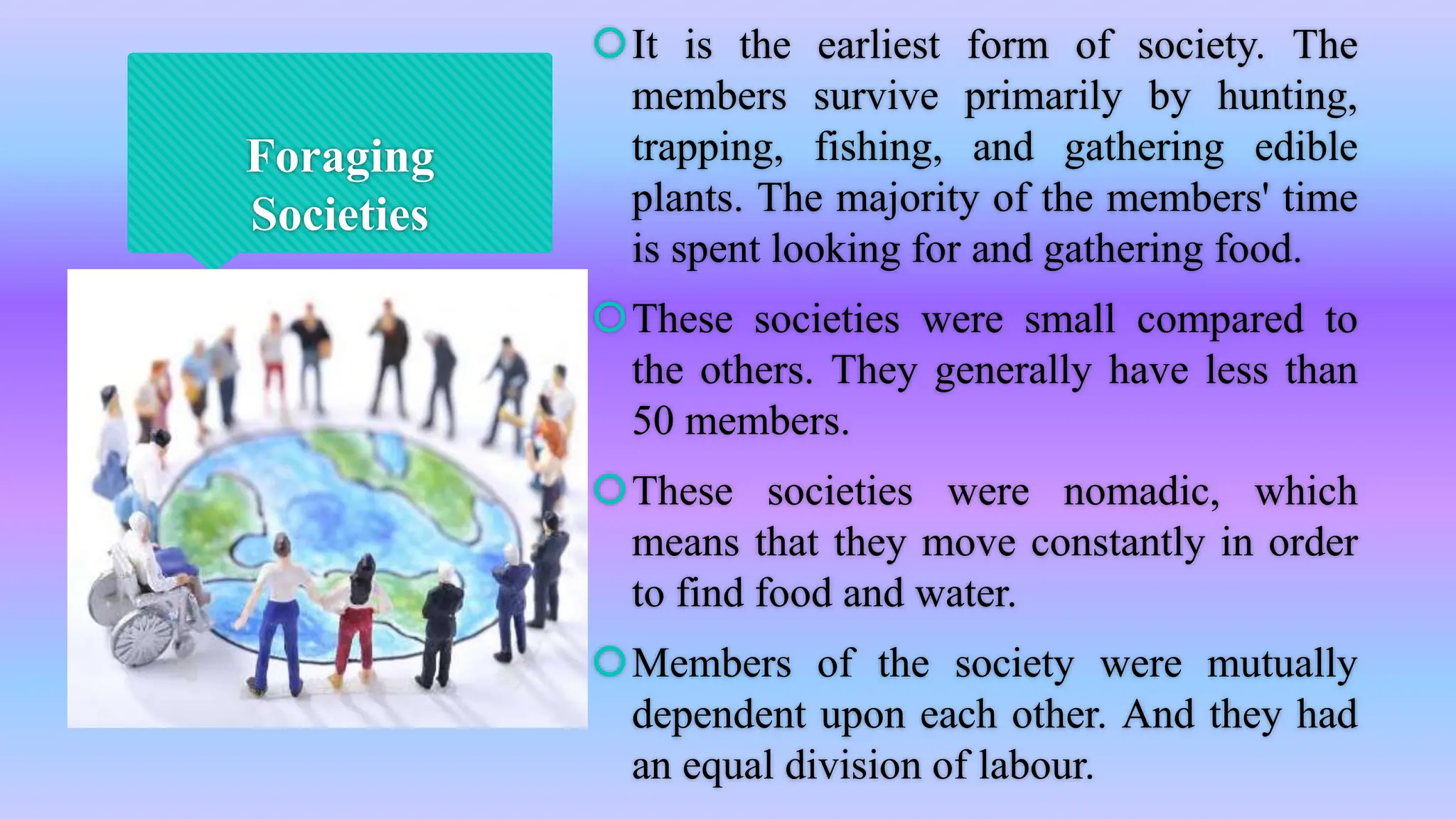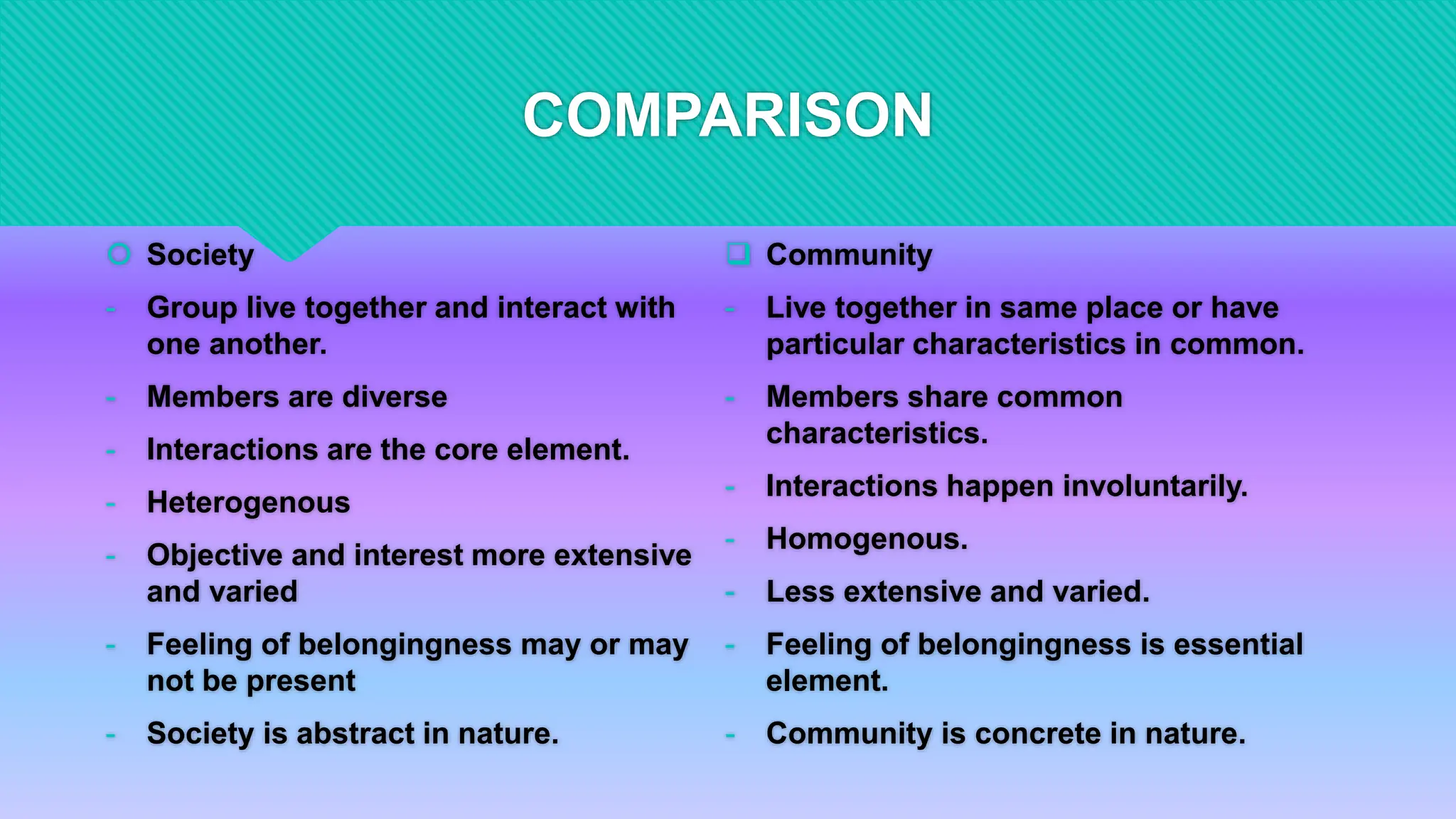The document discusses the concept of society, emphasizing that it is a complex structure made up of individuals who interact and form groups, with dependencies and stratification in social relationships. Various types of societies are described, including foraging, pastoral, horticultural, agricultural, industrial, and post-industrial societies, each characterized by their methods of survival and organization. Additionally, it presents the advantages and disadvantages of society, as well as comparisons between society, community, and associations, highlighting their unique characteristics and functions.






















